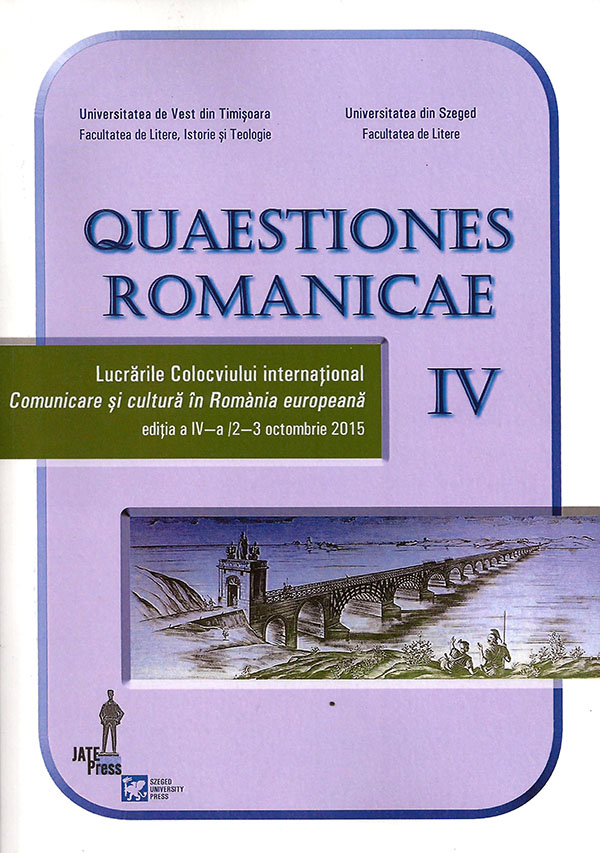Locul Rapsodiilor române de George Enescu în contextul școlii naționale de compoziție
Abstract: (Stylistic and interpretative approaches of the Romanian Rhapsodies by George Enescu). About Romanian Rhapsodies and their place in the creative universe of Enescu a lot was written. In most cases tangential reference is made to the two opposites of the composer’s youth, even though in many respects he distances himself from the great works of the maturity, masterly represented by The Third Sonata in “Romanian folk character” and Chamber Symphony. It is already accredited the idea that without this first step of the composer direct contact with Romanian Folklore would not have been born later great masterpieces of the folk origin. In this diapason are inscribed a series of documentary-analytical studies of the twentieth and twenty-first centuries,bearing the signature of prominent personalities of Romanian musicology,such as: Octavian Lazar Cosma, Grigore Constantinescu, Zeno Vancea, Ștefan Niculescu, Clemansa Liliana Firca, Mircea Chiriac, Cornel Țăranu, etc. All documents relating to the conceptual content of the two rhapsodies make relevant references to the prints of the fiddler folk-inspired authentic;is enlightening in this respect the assertion of the distinguished enescologist Octavian Lazăr Cosma who states with the direct reference to their profile; “are taken themes without substantial change, always repeating them in other vesting”. Zeno Vancea composer and musicologist, referring to the content of the Rhapsodies, explains their genesis as a continuation as a synthesis of ancestors to restore the novel connection between folkore and symphonic European thinking from the beginning of the XX century.
Keywords: Rhapsodies, George Enescu, style, interpretation, folk fiddler.
Rezumat: Despre RAPSODIILE ROMÂNE şi locul lor în universul creator enescian s-a scris foarte mult. În cele mai multe cazuri se fac trimiteri tangenţiale la cele două opusuri de tinereţe ale compozitorului, chiar dacă în multe privinţe se distanţează de marile lucrări de maturitate, magistral reprezentate de Sonata a III a “în caracter popular românesc” şi Simfonia de cameră . Deja este acreditată ideea că fără această etapă primă a contactului nemijlocit al compozitorului cu folclorul românesc nu s-ar fi născut marile capodopere de sorginte folclorică de mai târziu. În acest diapazon critic valorizator se înscriu o serie de studii documentar-analitice din secolul XX si XXI, purtând semnătura unor personalităţi de seamă ale muzicologiei româneşti ca: Octavian Lazăr Cosma, Grigore Constantinescu, Zeno Vancea, Ștefan Niculescu, Clemansa Liliana Firca, Mircea Chiriac, Cornel Tăranu, etc. Toate documentele referitoare la conţinutul ideatic al celor două rapsodii fac referiri pertinente la amprentele autenticului folcloric de sorginte lăutărească; este edificatoare în acest sens aserţiunea distinsului enescolog Octavian Lazăr Cosma care precizează cu referire directă la profilul lor; „se preiau teme fără să se modifice substanţial, repetându-se mereu în alte înveşmântări.” Compozitorul şi muzicologul Zeno Vancea, referindu-se la conţinutul Rapsodiilor, explică geneza lor ca o continuare, ca o sinteză a înaintaşilor de a reface inedita conexiune între atributele melosului popular şi gândirea simfonică europeană de la începutul secolului XX.
Cuvinte-cheie: Rapsodii, George Enescu, stil, interpretare, folclor lăutăresc.
